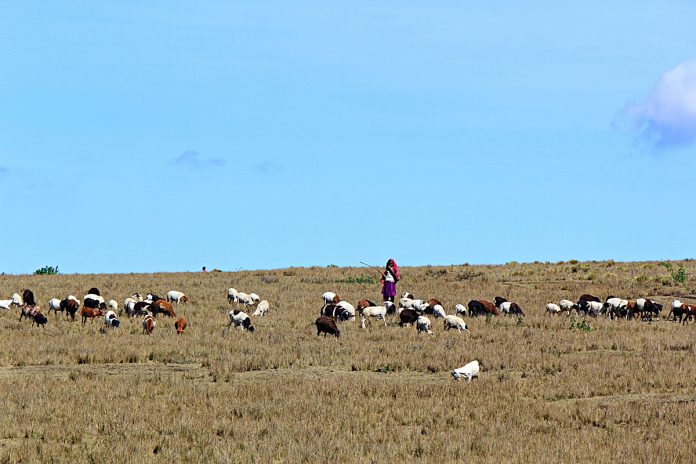
Here, Professors Sharadhuli Kimera and Gerald Misinzo from Sokoine University of Agriculture, focus on viral diseases of food security that affect livelihood
According to studies by the World Bank, World Health Organization (WHO), United Nations Food and Agriculture Organisation of the (FAO), World Organisation for Animal Health (OIE) and others, infectious diseases account for a half of morbidity and mortality in humans -while for animals they constitute a major constraint to livestock dependent livelihoods and is the single most important barrier to export of African livestock commodities to the lucrative markets of the OECD and G20 countries. 12 of the 15 transboundary animal diseases are found in Africa.
The situation in Africa has worsened in recent years with the further spread of diseases, such as peste des petits ruminants (PPR), tilapia lake virus disease (TiLVD) and African swine fever (ASF). In recent years, there have been numerous outbreaks of livestock diseases costing individual countries billions of dollars, for example, ASF in the European Union, Russia and China.
The UN Sustainable Development Goals (SDGs) and African Union Agenda 2063 have targets for reducing poverty and hunger, but these are compromised by livestock diseases. In most developing regions in Africa, where the impacts of infectious disease are greatest, there is now little hope of meeting any of these targets unless we exploit the advances in science, technology and innovation outlined in the Science, Technology and Innovation Strategy for Africa (STISA-2024).
How can outbreaks of disease happen?
Since outbreaks of disease can move rapidly and spread across a country, across regions and, in some cases, become global, the best strategy is to stop the disease ‘in its tracks’ as early as possible. For this to happen, extremely rapid detection and accurate identification of the pathogens has to be undertaken; this would facilitate the correct control measures to be put in place.
In those early stages, and thereafter, understanding where the outbreak is and its progress through the region are critical for control; thus, effective monitoring surveillance and directed epidemiology provide the authorities with key information to target appropriate control measures. Often, this is not done until livestock diseases spread and spin out of control, for example, a localised introduction of ASF virus in Georgia from Madagascar has now spread to China, the major pork producer in the globe. Since its first description in 1942 in Ivory Coast, PPR has now spread to most of tropical and northern Africa, south-Central Asia, Mongolia and China. This disease is now a subject of an internationally coordinated global eradication programme, which is jointly spearheaded by FAO and the World Organisation for Animal Health (OIE).
With the recent advances in technology, it is possible to rapidly detect infectious diseases at source, thanks to the exploitation of the power of genomics and bioinformatics, novel information technologies for the capture, analysis and modelling of data and field-deployable portable ‘lab-on-a-chip’ devices.
The focus our Community of Practice (CoP) for Viral Diseases of Food Security and Livelihood Importance is to develop innovative approaches through science and technology-driven by genomics, molecular biology and analytical epidemiology in order to improve the risk management of transboundary animal diseases i.e. on foot-and-mouth disease affecting cattle, PPR affecting sheep and goats, ASF affecting domestic pigs, Newcastle disease affecting poultry and TiLVD affecting tilapia fish. Some of these diseases, PPR, ASF, ND and TiLVD affect short-cycle animal stocks and disproportionately constraining female participation in profitable animal agriculture, reduce household income and animal protein food for children.
The Community of Practice Composition
The CoP is led by Professor Sharadhuli Kimera of the Sokoine University of Agriculture (SUA). Scientists working with the CoP from SUA are Professors Gerald Misinzo and Christopher Kasanga under direct mentorship of Professor Mark Rweyemamu, the Executive Director of the SACIDS Foundation for One Health and Chair of the FAO-OIE Technical Advisory Committee for the global eradication of PPR. Nationally, the CoP works with scientists from the Ministry of Livestock and Fisheries, Tanzania Veterinary Laboratory Agency, Tanzania Wildlife Research Institute and the Country Office of the FAO. Regionally, the CoP works with the University of Zambia, Makerere University, Botswana Vaccine Institute, International Centre for Insect Physiology and Ecology and the International Livestock Research Institute.
Internationally, we work with the Royal Veterinary College (RVC) and The Pirbright (TPI) Institute, United Kingdom; Ghent University (UGent), Belgium; Vrije Universiteit Brussel (VUB), Belgium; Korea Institute for Science and Technology (KIST), Republic of Korea; Swedish University of Agricultural Sciences (SLU), Sweden; Animal Health Research Centre (CISA) of the National Institute for Agricultural and Food Research and Technology (INIA), Spain. The CoP is privileged to work with internationally renowned scientists who co-supervise and strategically host our PhD students at their laboratories.
The notable specialists who have immensely supported the COP research and training agenda include Professors Richard Kock and Fiona Tomley, and Drs Camilla Benfield and Robert Noad of the RVC, Professors Don King, David Paton and Satya Parida of TPI, Professor Hans Nauwynck of UGent, Professor Serge Muyldermans of VUB, Professor Sang Kyung Kim of KIST, Professors Jonas Wensman and Mikael Berg of SLU and Dr Carmina Gallardo of CISA-INIA.
Research and training of bright young Africans
The CoP for Viral Diseases of Food Security and Livelihood Importance hosts postgraduate students from across Africa for research and training under the theme of Food Security. These are supported through the SACIDS Africa Centre of Excellence for Infectious Diseases, the Regional Scholarship and Innovation Fund (RSIF) of the Partnership for skills in Applied Sciences, Engineering and Technology (PASET) and the Inter-University Council for East Africa (IUCEA). Strategic placement of research apprentices is done at our partner institutions, mainly at TPI, RVC, VUB and KIST.
*Please note: This is a commercial profile










